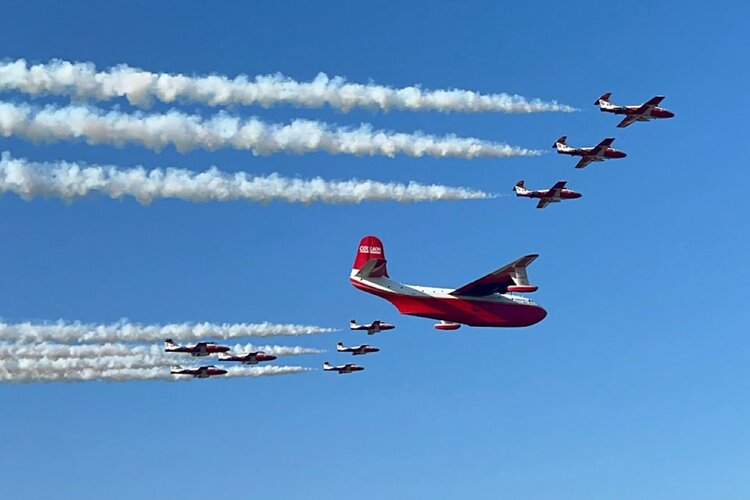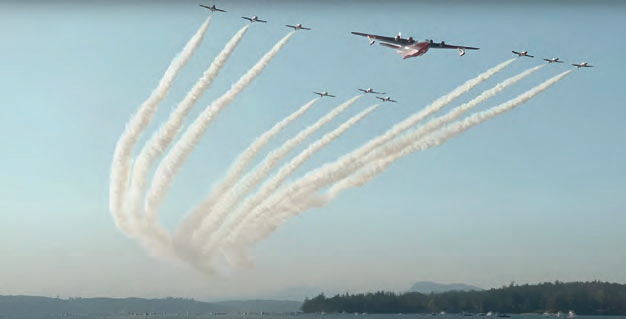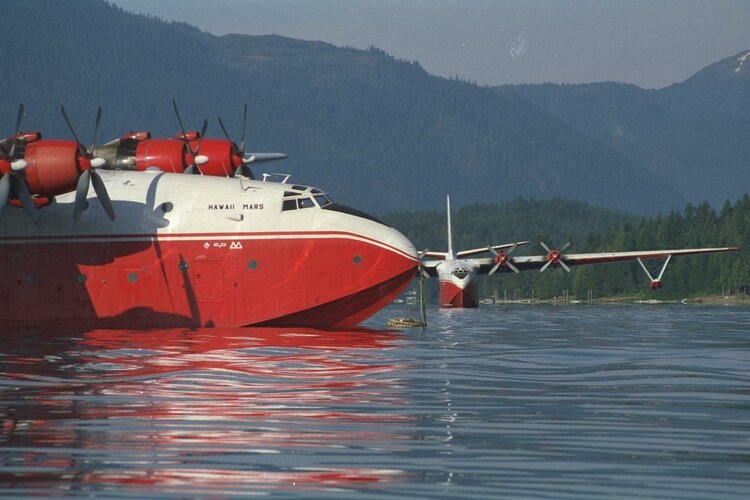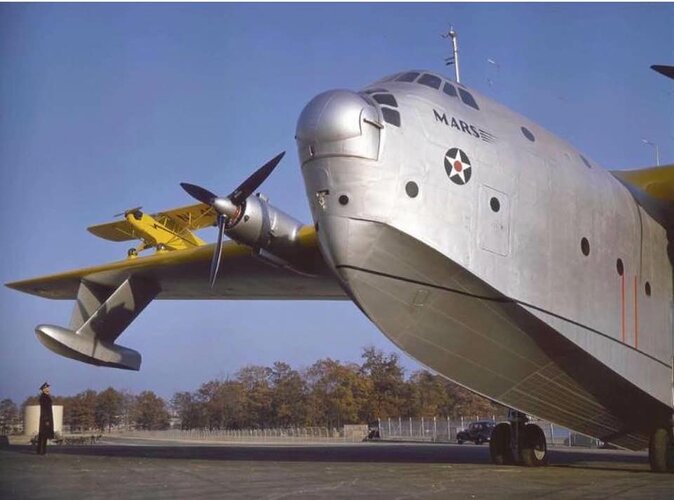WAR PRODUCTION BOARD
WASHINGTON, D. C.
MEMORANDUM
July 28, 1942
To: Files
Subject: Proposal for Replacing Cargo Vessels with
Cargo Aircraft
A brief study made by the Navy regarding the proposal that a fleet of Martin Mars flying boats be built to replace cargo vessels has brought out the following data.
First, approximately 10,000 Mars aircraft would be required to replace 100 cargo vessels of the 10,000 ton size for carrying cargo 3000 miles, assuming that gasoline for the return trips of the Mars aircraft would be available at destination so that they would not have to carry their own gasoline supply for the round trip.
To operate these Mars aircraft 80,000 trained men would be needed, whereas 100 cargo vessels would require a total of only about 4,000 men of whom 1,000 would have to have special training.
The Wright 3350 Cyclone engines to operate these Mars aircraft would total 80,000 units, assuming 100% spares on the basis of 2750 man hours per engine, and figuring that the entire quantity would have to be produced in two years in order to see service in this war, a total of about 35,000 men would be required for the production of the engines alone.
Since material shortages are critical, it is obvious that the construction of 500 Mars flying boats per month would have a very serious effect on presently planned programs for other types of aircraft.
One other item to note is that 100 cargo vessels would ordinarily keep 100,000 to 150,000 fighting men supplied with equipment, food, and other necessities. To do this with Mars flying boats would mean that 80,000 very well trained personnel would be required to operate the flying boats to keep 100,000 to 150,000 men supplied for fighting Since trained pilots, navigators, radio operators, etc. are scarce, this in turn would reduce the number of skilled personnel available to operate fighting aircraft.
It was the opinion of the Navy personnel with whom I discussed this subject that the man power and materials could be used more effectively by building and operating fighting aircraft, probably of the heavy bomber type, to destroy the opposition's submarine building facilities and thereby eventually reduce the cargo vessel sinkings to a point where they would again become a reliable method of transportation. The Navy indicated that they were not too optimistic over the possibilities of combating the submarine menace with aircraft as this method has been rather unsuccessful to date.
Edwin C. Walton
Proj. Eng.-Heavy Bombers
Aircraft Production Division






